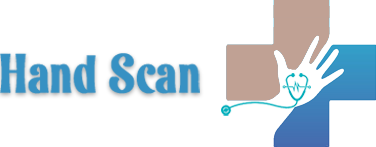Strokes and heart attacks
Strokes and heart attacks
Stroke and heart attack are two serious health complications that occur due to disruption of blood flow to the vital organs of the body. This text examines the occurrence and symptoms of these two types of stroke, risk factors and their prevention, diagnosis and treatment.
Part 1: Introduction
Stroke and heart attack are two types of stroke that occur due to disruption of blood flow to the tissues of the brain and heart. These two incidents can have serious consequences for human health and are known as two deadly and important complications in medicine.
Part 2: Stroke
reasons:
A stroke may occur due to a blockage of a blood vessel that prevents blood from reaching a part of the brain, or due to insufficient blood supply to the brain. The most common causes of stroke are:
Atraumatic plaques: The accumulation of fat and salts in the walls of blood vessels can lead to the formation of atraumatic plaques that restrict blood flow.
Vascular occlusion: Complete or partial blockage of a blood vessel by a blood clot can lead to a stroke.
Blood clot: A clot that forms in another part of the body and travels to the brain can block the cerebral arteries.
signs:
A stroke can occur suddenly and its symptoms can be extremely diverse. Some common symptoms of a stroke include:
Weakness or low tension
Difficulty emphasizing words
Handmade
Dizziness or loss of balance
Blurred vision or loss of vision in one or both eyes
Sudden and severe headache
Difficulty speaking and understanding words
Part 3: Heart attack
reasons:
A heart attack occurs due to the sudden death of heart muscle cells due to blockage of blood vessels that prevent blood from reaching the heart. The most common causes of heart attack are:
Vascular block: Blockage of blood vessels that do not supply blood to the heart muscle.
Clot formation: A clot that forms in a blood vessel and blocks cardiac output.
Internal adhesion of blood vessels: creating an automatic crack in the wall of blood vessels that leads to blockage.
signs:
The symptoms of a heart attack may be diverse and their severity is different. Some of the common symptoms of a heart attack are:
Chest pain or tightness that radiates to the shoulders, arms, neck, or lower jaw.
Cold sweat, faint and flushed
Nausea or vomiting
Weakness or weakness
Feeling short of breath
Section 4: Risk factors and prevention
Common risk factors:
Factors that can be a risk factor for both types of stroke and heart attack include:
high blood pressure
diabetes
obesity
being a smoker
Insufficient physical activity
Family history related to cardiovascular diseases
Age over 55 years
prevention:
To prevent stroke and heart attack, you can do the following:
Healthy eating: A diet that is low in fat and high in fiber and healthy foods such as fruits and vegetables.
Regular exercise: Regular physical activity that includes cardiovascular care.
Blood pressure management: If you have high blood pressure, you may need to use medications and lifestyle changes to manage it.
Quit smoking: Do not smoke or if you are a smoker, try to quit smoking.
Diabetes management: If you have diabetes, it is important to manage it properly in consultation with your doctor.
Section 5: Diagnosis and treatment
Diagnosis:
Diagnosis of stroke and heart attack is mainly based on clinical symptoms, blood tests, imaging (such as CT scan or angiography) and specialized investigations such as cardiac angiography.
treatment:
Treatment of stroke and heart attack is very important. Treatments may include drugs, surgery, angioplasty and stenting, or other procedures. The choice of treatment depends on the type and severity of the stroke and the individual's condition.
Section 6: Conclusion
Stroke and heart attack are two serious and dangerous accidents for human health. There are common risk factors for these two types of stroke, and their prevention can be done with blood pressure management, proper nutrition, regular exercise, and risk factor management. Timely and appropriate treatment is also very important. See your doctor immediately if you have symptoms of a stroke or heart attack. The importance of time in the diagnosis and treatment of these incidents should not be overlooked.





